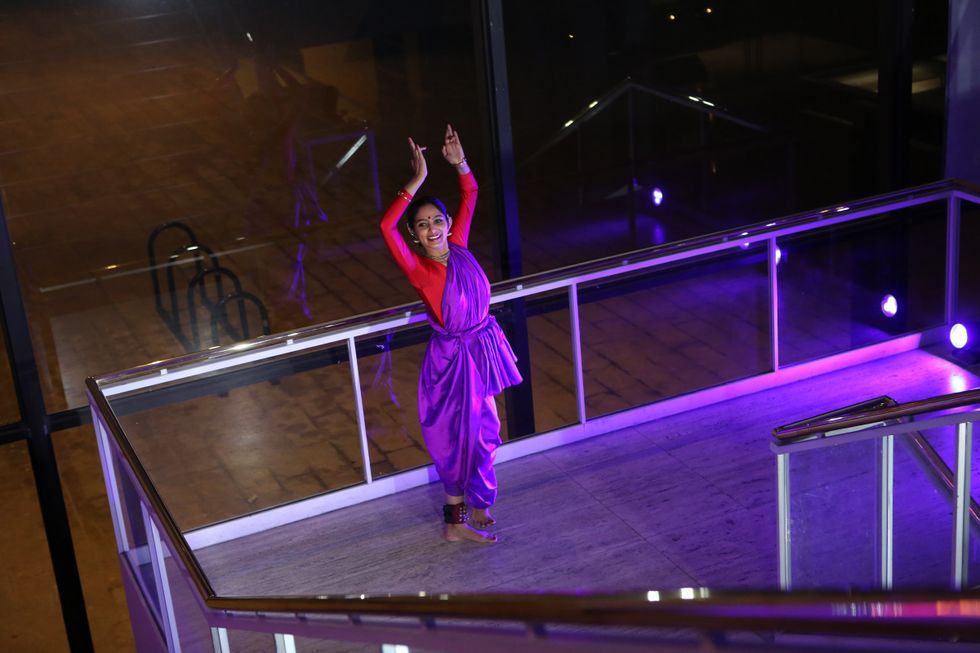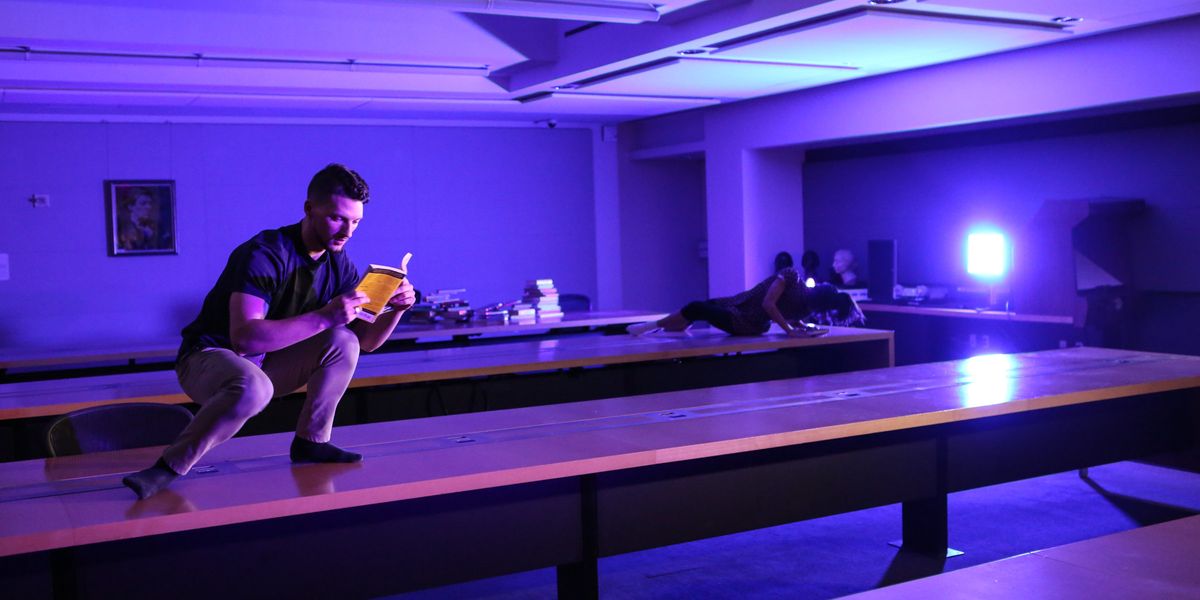The Most Magical Dancing in New York City Last Week Was in a Public Library
Libraries, rightly or not, are frequently designated in the public consciousness as places that are silent, stuffy and still.
This has never really been the case when it comes to the Jerome Robbins Dance Division at the New York Public Library for the Performing Arts. Last Wednesday, as dance world luminaries and patrons alike gathered to celebrate its 75th anniversary (which we highlighted in a print-exclusive feature in our August issue), this was more apparent than ever as brief dance performances unfolded in unexpected corners of the division’s home on the Lincoln Center campus.

Pam Tanowitz’s Library Dance
Julie Lemberger, Courtesy NYPL
When Linda Murray, the division’s current curator, began planning how to celebrate the landmark anniversary, she approached each of the four women who had previously held the post to ask what their dream project would be. The indomitable Genevieve “Gegi” Oswald, who first began partitioning the music division’s dance-related materials in 1944 and led the charge to create a distinct dance wing, had a very specific request. “Gegi, ever the maverick, said her wish was that this library be turned into a house of dance for one day,” Murray said. Oswald passed away at age 97 earlier this year, but the team at the Dance Division was determined to carry out her wish.
Thus, eight site-specific performances were concocted for the occasion. The breadth of genres represented reflected the omnivorous attitude the collection’s curators have towards preserving dance of any and all kinds. The overall effect? It was as though the history contained within the world’s largest dance archive had come to life, the ghosts of the past and future joyously traipsing through the stacks after hours, Night at the Museum style.

Aishwarya Madhav in Rajika Puri’s A West/East Song and Dance
Julie Lemberger, Courtesy NYPL
Renowned bharatanatyam and Odissi choreographer Rajika Puri contributed a solo for Aishwarya Madhav. A West/East Song and Dance unfolded on the landing of the steps that lead to the second floor. “I remember the first time I came here, and I walked these very steps,” she began before remixing Dying Swan and West Side Story—which was filmed, she reminded us, by the division’s namesake on the building’s foundations—through a classical Indian lens.

Pam Tanowitz’s Library Dance
Julie Lemberger, Courtesy NYPL
Nearby, jut a moment after that solo concluded, four brightly dressed figures appeared and disappeared in a narrow, dimly lit walkway between a wall and the dance stacks. The dancers ducked in and out of the shelves, forming shifting architectures as they stepped out of the shadows in Pam Tanowitz‘s appropriately titled Library Dance.

Jean Butler in her For You
Julie Lemberger, Courtesy NYPL
In the reading room between the music and dance shelves, a barefoot Jean Butler danced atop a table to music playing only in her wireless earbuds. For You unfolded as an intimate study of the percussive rhythms of Irish stepping, the sounds perfectly clear (despite her bare feet) in the otherwise silent, still space.
Around the corner of the music stacks, Ephrat Asherie delicately illuminated the melodies of her accompaniment (by Lester Young, recorded by her brother and frequent collaborator, Ehud Asherie) in Riff this Remix. The notes of the chosen song seemed to be etched across the floor by her musical breaking.

Ballet Hispánico’s Chris Bloom and Shelby Corona in Michelle Manzanales’ If By Chance…
Julie Lemberger, Courtesy NYPL
Upstairs, a duet between Ballet Hispánico’s Chris Bloom and Shelby Colona played out across the row of long, narrow tables in special collections. Extensions and backbends unspooled dreamily atop and between the tables as they literally and figuratively danced around one another—without ever looking away from the open books in their hands. It wasn’t until the very end of Michelle Manzanales’ If By Chance… that the pair finally looked away from their books and, almost blushing, finally made eye contact.
Four members of The Bang Group were hidden in a corner in an area normally only accessible to library staff. The cascading tap rhythms of David Parker’s 12×4 echoed in the tight space as the dancers grinningly worked around each other in an even tighter one.

Heidi Latsky’s D.I.S.P.L.A.Y.E.D. (Excerpts)
Julie Lemberger, Courtesy NYPL
A single aisle of the third floor reading room was activated by excerpts from Heidi Latsky‘s D.I.S.P.L.A.Y.E.D. Three performers from her physically integrated company moved with the quality of specters, haunting and otherworldly.

Georgina Pazcoguin and Adrian Danchig-Waring perform N.Y. Export: Opus Jazz 12/04/19, choreographed by Jerome Robbins, arranged by Danchig-Waring.
Julie Lemberger, Courtesy NYPL
In the screening room, a film of Robbins’ N.Y. Export: Opus Jazz played on a small screen. On the floor were tape marks illustrating the dancers’ pathways in the first movement; New York City Ballet principal Adrian Danchig-Waring invited the audience to stand on an X or O, forming a circle around the edge of the space. He and soloist Georgina Pazcoguin danced sections of the work, in homage to the choreographer who, alongside Gegi Oswald, helped spearhead what is now named the Jerome Robbins Audio and Moving Image Archive.
After the site-specific works wrapped up, there was one final treat. American Ballet Theatre’s Sarah Lane and NYCB’s Gonzalo Garcia came together to perform excerpts from Robbins’ Other Dances. It was a particularly poignant choice: In 1976, Robbins made the duet on Natalia Makarova and Mikhail Baryshnikov. The occasion? A gala performance at the Metropolitan Opera House benefiting the Library for the Performing Arts.

Gonzalo Garcia and Sarah Lane in Jerome Robbins’ Other Dances
Julie Lemberger, Courtesy NYPL
Overall, the evening served as a reminder of something that Danchig-Waring perhaps said best: This library and the materials contained within hold “the key to an uncertain future.”
Here’s to 75 more years.




